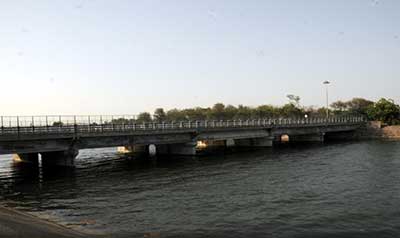Relevance: GS-3 : Different Types of Irrigation and Irrigation Systems; Disaster and Disaster Management; Conservation, Environmental Pollution and Degradation
Key Phrases: Consensus Based Approach; loss of livelihoods and residence; water-deficit regions of Saurashtra and Kutch;
Why in News?
- Due to strong protests from tribals in southern Gujarat it has been decided that any progress on Par-Tapi-Narmada river-link project would be halted. The project was proposed in the union budget.
Interlinking of Rivers Program
- Also known as National River Linking project (earlier known as National Perspective Plan)
- The plan proposes to connect 14 Himalayan and 16 peninsular rivers with 30 canals and 3,000 reservoirs to form a South Asian Water Grid.
- NRLP is managed by National Water Development Agency (NWDA) under the Ministry of Jal Shakti
- Various projects which are under implementation are
- Kosi-Mechi Link project
- Krishna-Godavari Link project
- Ken-Betwa link project
- Centre is mulling creation of an autonomous body NIRA
(National Interlinking of Rivers Authority) to speed up the projects
- It would replace NWDA
- Advantages:
- Water availability in water stressed areas of Southern India
- Requisite Flood management to divert water from flood prone areas to drought prone areas
- Fulfil the needs of the people by supporting irrigation and
industries
- Potential to irrigate 35 MHa in drought prone western peninsula
- Potential to provide 65 bcm of water for industrial use.
- Inland water drainage will improve connectivity and provide cheap and green alternatives of transportation
- Disadvantages:
- Environmental cost - Ill effects on Biodiversity of Source river
- Irrigation through open canals suffer from water loss, sedimentation.
- Human cost - as it leads to displacement of people
- Political Cost - Political agitations against these projects hamper other developmental works
Key Highlights
- The State government has apparently conveyed to the Centre about protests by the local tribals in south Gujarat and its likely electoral impact on the forthcoming Assembly poll in the State.
- The project was to be based on mutual benefits of both the states (Maharashtra and Gujarat) and the consent of both the states was necessary to go ahead with the project
- The local communities feared that the project would displace residents in south Gujarat.
- They claim it would destroy their livelihood in Valsad, Dangs and Navsari districts.
Importance of the project
- The project is meant to transfer water from the water-surplus regions of Western Ghats to the water-deficit regions of Saurashtra and Kutch through the Sardar Sarovar Project.

Project proposal
- Under the project, water was proposed to be taken from 7 reservoirs
through a 395-kilometre canal.
- Of the seven reservoirs, one is from Maharashtra and the remaining six are located in Valsad and Dang districts of Gujarat.
- The controversial project seeks to link three rivers
- Par, which originates from Nashik in Maharashtra and flows through Valsad in Gujarat,
- Tapi from Saputara that flows through Maharashtra and Surat in Gujarat, and
- Narmada originating in Madhya Pradesh and flowing through Maharashtra and Bharuch and Narmada and Vadodara districts in Gujarat.
- As per the detailed project report prepared by the National Water Development Agency (NWDA), about 6065 ha of land will be submerged due to the proposed seven reservoirs to be built in Maharashtra and Gujarat.
- A total of 61 villages will be affected, of which one will be fully
submerged and the remaining 60 partly. The total number of affected families
would be around 2,509
- This would affect the residence and livelihoods of the tribals.
Conclusion
- Any developmental needs must cater to the needs of the people. Government should adopt a consensus based approach to nudge the tribals towards the project by showcasing a full-proof rehabilitation plan spearheaded by representatives from their own community. Meanwhile, other non-intrusive river management methods like River basin plan, integrated water basin management must be deployed.
Source: The Hindu
Mains Question:
Q. Explain the Par-Tapi-Narmada river interlinking project? Also mention the challenges and potential benefits to be accrued from such projects.









